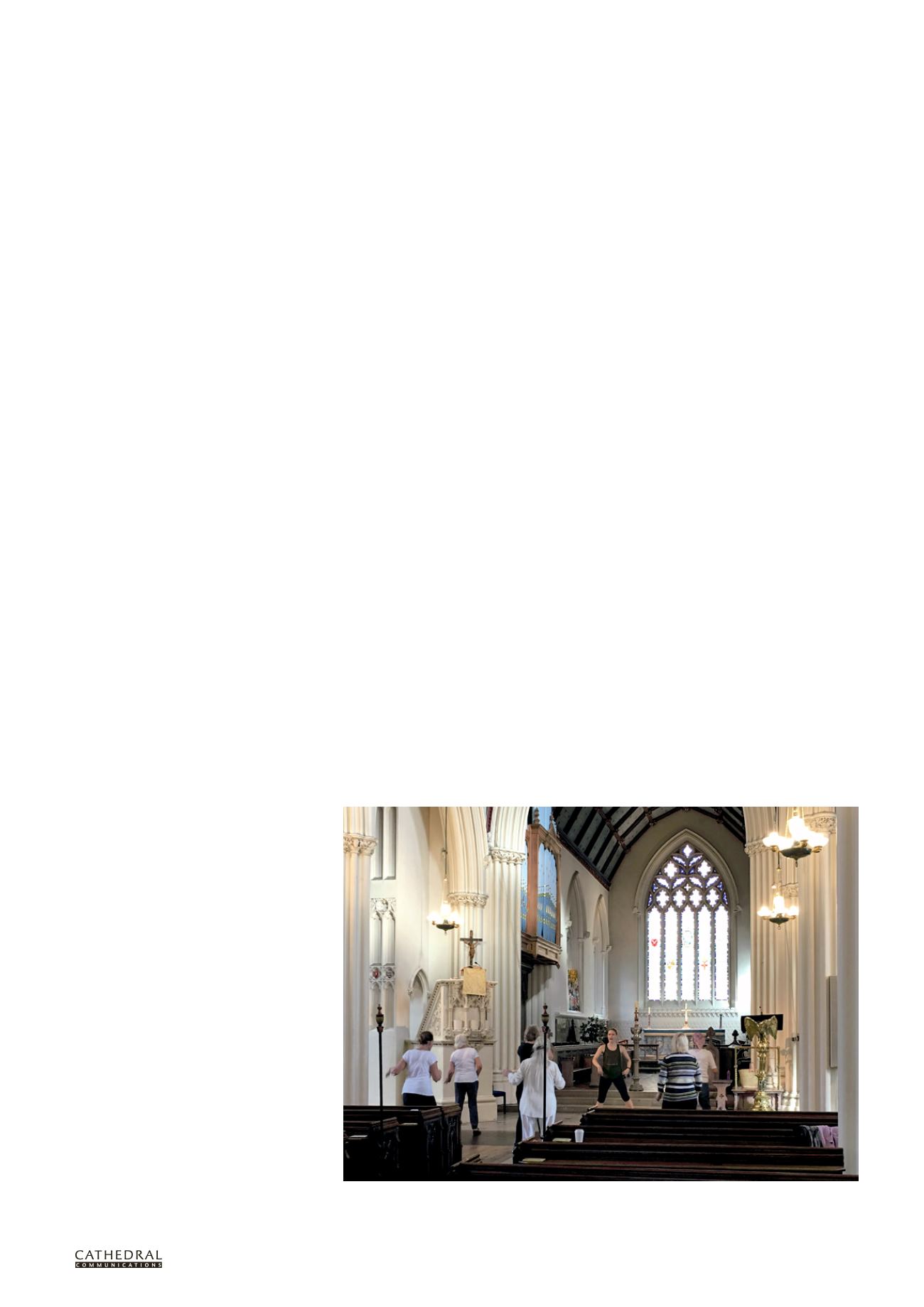

BCD SPECIAL REPORT ON
HISTORIC CHURCHES
24
TH ANNUAL EDITION
5
were built. They offer something unique
and hard to define in addition to their
architectural glory.
Perhaps that additional something
is better captured by novelists and
poets than by architects, theologians
and historians. What the novelist Susan
Hill writes of cathedrals (see Further
Information), could be said of parish
churches: ‘Where else in the heart of a city
is such a place, where the sense of all past,
all present, is distilled into the eternal
moment at the still point of the turning
world?’ She asks another rhetorical
question which amplifies the point:
But surely there are other places
that will serve the purpose? To
which people may come freely, to
be alone among others? To pray, to
reflect, to plead, gather strength,
rest, summon up courage, to
listen to solemn words. What are
these other places? To which the
pilgrim or the traveller, the seeker,
the refugee, the petitioner or the
thanksgiver may quietly come,
anonymously, perhaps, without fear
of comment or remark, question
or disturbance... To think of the
world without these cathedrals,
without all cathedrals, is like a
bereavement. It is painful. The
loss of the buildings themselves,
the grandeur, the beauty, is
unimaginable – the mind veers
away from it. But think of the
world without the great palaces.
Surely that is the same? We know,
deeply, instinctively, that it is not.
Destroy all the churches then.
Is not that the same? We know
that it is more. And that it is not
merely a question of thunderbolts.
There is indeed more, much more. That is
surely because these buildings are ‘living’.
This makes them particularly precious
and, at the same time, something of a
headache as far as their conservation
is concerned. There are those who feel
similarly to William Morris, whose words
are quoted in the SPAB manifesto, who
felt it proper
to resist all tampering with either
the fabric or ornament of the
building as it stands; if it has
become inconvenient for its present
use, to raise another building rather
than alter or enlarge the old one; in
fine to treat our ancient buildings
as monuments of a bygone art,
created by bygone manners, that
modern art cannot meddle with
without destroying.
Morris, of course, was protesting against
Victorian restoration of buildings. We
may feel that restoration to have been
heavy-handed but the fact is that, had it
not taken place, many would have fallen
down and they would not be usable today.
Buildings had, in fact, been significantly
adapted many times over the centuries.
One of their glories is the hotchpotch of
architectural styles they display. These
changes have enabled them to ‘live’, and
to subject them to Morris’s imperative
would be to sign their death warrant. They
would become lifeless museums which,
if listed, could probably not be put to any
alternative use anyway.
How can their health be assured?
The approach of the Church of England
in this regard is different from that
of other denominations. Many of the
free churches are happy to dispose of
old buildings and build anew because
they don’t have a great emphasis on
or regard for heritage or sacred space.
Meanwhile, the Roman Catholic Church
is bound by a ruling dating back to
the Council of Trent that their church
buildings can only be used for worship
and, as such, are less of a problem for
the conservationist. Since Henry VIII
gave us ‘Brexit’ from Rome and its rules,
the Church of England has been free to
re-discover and reintroduce the mixed
economy of medieval Christendom.
To advocate such a mixed economy
is not to deny the holiness of our
churches. In our report we observe that
‘in Church of England polity some places,
notably churches and graveyards, are
deemed to be “holy” by virtue of their
consecration’. It should be noted that
the word ‘holy’ simply means set apart.
What are churches ‘set apart’ for? They
are set apart to symbolise the Christian
faith. We observe that if they are to
be effective symbols of the Christian
faith we must avoid them becoming
redundant or museums by allowing them
to live and breathe. This will often mean
re-ordering and adapting in a manner
which is sensitive to their heritage but
that will enable the life of contemporary
worshipping Christians and service of
the community (see Further Information,
Walter and Mottram, Poulios).
We argue that one of the reasons
a number of churches have become
more like museums is possibly a lack
of awareness that both parts of Jesus’s
summary of the Commandments have
repercussions for churches, as they do for
disciples. The first purpose of churches, as
with human beings, is to worship God and
churches generally do reasonably well on
the first Great Commandment.
The record is not always so good with
the second, to love our neighbour. As it
applies to churches, it implies that they
should be vibrant centres of service to
the community. Traditionally, churches
were at the heart of the communities
in which they stand, in both a human
and a geographical sense. It is well
known that in the medieval period much
‘secular’ activity would have taken place
within them. Over the years, however, a
pietism crept in which tended to exclude
everything but public worship from
them, all other activity being transferred
to places such as halls and community
centres. Far too many churches remain
locked and stand like mausoleums
St Stephen’s, Rochester Row, London: Zumba class in the nave (Photo: Joseph Friedrich/Archbishops’ Council)


















